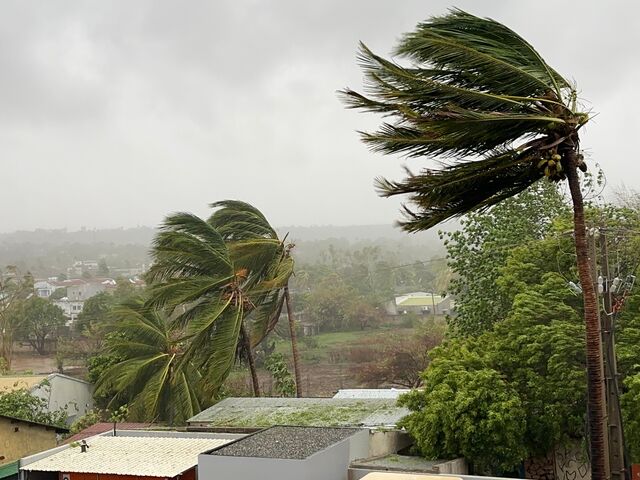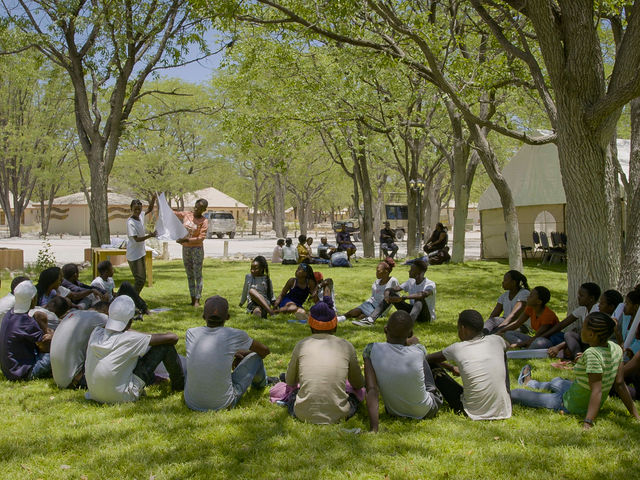Adolescent girls are six times as likely to acquire HIV than boys in Eastern and Southern Africa, where rates of early pregnancy and gender-based violence are some of the world’s highest
For immediate release
Adolescent girls are six times as likely to acquire HIV than boys in Eastern and Southern Africa, where rates of early pregnancy and gender-based violence are some of the world’s highest
In Eastern and Southern Africa, adolescent girls are being disproportionately held back by three interconnected issues: Early pregnancy, HIV, and gender-based violence. With 20 per cent of babies born to mothers below age 20, the region has some of the world’s highest rates of adolescent pregnancy[1] and remains the epicentre of the HIV crisis. Two-thirds of the global population of adolescents living with HIV reside in this region[2] and adolescent girls are six times as likely to acquire HIV as their male counterparts.[3] Adolescent pregnant mothers are more likely to experience poor mental health, stigma, discrimination and isolation. Adolescent mothers are more likely to drop out of school, face gender-based violence and often these challenges extend to their children.[4]
Africa has the youngest and fastest-growing population on earth, with a median age of 19, its workforce will be a billion-strong and surpass China and India’s in the next decade.[5] The continent has an opportunity to reduce inequality if it supports adolescent girls- a demographic crucial to Africa’s global ascent, but chronically overlooked by decision-makers and society at large. Investments in adolescent health and wellbeing are proven to bring benefits today, for decades to come, and for the next generation.[6] Progress is being hampered - and in some cases rolled back - by restrictive laws, discriminatory policies and attitudes and patriarchal cultural norms.
Alice Armstrong, Adolescent Girls and Young People lead for the 2gether 4 SRHR programme at UNICEF said: “The drivers of HIV, unintended pregnancy and violence are interrelated. A key way to support young people (those most affected) is to listen to their experiences and build programmes around their needs. Young people are already leading change in many inspiring and effective ways.”
Jerop Limo, Executive Director of AYARHEP (Ambassador for Youth Reproductive Health programme) said: “Young women may want children but need accurate information so they can exercise their right to decide freely and access options for deciding when. We need better education about sexual and reproductive health and rights, accessible contraception and stigma free, youth-friendly services.”
Kigen Korir, ASRH and Youth Specialist from the UNFPA Country Office in Kenya, said: “Progress in addressing the unmet need for family planning is slow. 42% of unmarried adolescents (age 15-19) and 29% of unmarried young women (15-24) still do not have access to contraceptives in this region. Without a concerted effort to support Sexual Reproductive Health and Rights (SRHR), we will not likely meet the Sustainable Development Goals on health or gender equality”.
Purity Gikunda, Co-Founder of Greenland School for adolescent mothers in Kadjiado, Kenya and partner of Journalists for Human Rights said: “Education is not only about acquiring knowledge, it is a catalyst for empowerment and social change. By keeping girls in - and returning girls to - school, we equip them with the tools they need to make informed decisions, which improves their health and wellbeing and their children’s future potential.”
Because women and girls carry the burden of pregnancy and childbirth, this can increase their health risks. But only 55% of women globally say they have the freedom to determine if and when they want to start a family.[7] An African woman with maternity complications is around 130 times more likely to die than a woman in Europe and Northern America.[8]
Too often, adolescent pregnancy and HIV result from gender based violence. Southern Africa has one of the highest rates of violence against women and girls. One third of women reported experiencing intimate partner violence in the last 12 months in the 16 countries in the SADC region in 2022 and a shocking 17% of women and girls in Southern Africa have experienced forced sex in their lifetime.[9] This lack of autonomy directly impacts women and girls’ capacity to protect themselves from HIV transmission.
New evidence about behaviours which drive risk can be lifesaving when used to improve the design of health interventions. In partnership with the Universities of Oxford and Cape Town, 2gether 4 SRHR studied the link between violence and the likelihood of young people who are living with HIV taking antiretroviral treatment (ART). The study found promising evidence that reducing violence can reduce the risk of ART non-adherence for adolescents living with HIV from 75 per cent to 25 per cent.[10]
While medical breakthroughs (such as a single daily pill) have helped to reduce HIV and support family planning, the less tangible obstacles of violence, stigma, discrimination and mental health have historically been less researched, funded or understood. Support for young parents is crucial and should address multiple immediate needs and longer-term needs, through cash transfers and psycho-social and relationship support, but also assistance such as positive parenting, livelihoods and skills.[11]
Evidence shows the smartest investments for improving the health and wellbeing of adolescents are coordinated investments in health and education that reinforce each other. Dr Geoffrey Bisoborwa, Technical Officer for Adolescent Health at WHO Regional Office for Africa said: “Keeping girls and boys in school for as long as possible is key. We must equip adolescents with the tools they need to make informed decisions about their health and well-being, by deploying a multimedia approach including using digital technology to reach the majority of adolescents in different settings with information”.
2gether 4 SRHR is a Regional United Nations Joint Programme aiming to improve the sexual and reproductive health and rights of all people in East and Southern Africa, including a focus on adolescent girls and young women.
Press office contacts:
2gether 4 SRHR: Gemma Parkin: gparkin@unicef.org.uk / +254743145305
Journalists for Human Rights (JHR) Mustapha Dumbuya: Mustapha@jhr.ca +254701068128
[1]https://www.unicef.org/esa/media/10111/file/AYM-Technical-Brief-WHO-UNICEF-Dec-2021.pdf
[2]https://www.childrenandaids.org/sites/default/files/2023-12/231201_ESARO_Snapshot_HIVFinal_0.pdf
[3]https://aidsinfo.unaids.org/ In 2022, there were an estimated 66k new infections in adolescent girls (10-19) and 11k new infections in adolescent boys.
[4]https://www.unicef.org/esa/media/10111/file/AYM-Technical-Brief-WHO-UNICEF-Dec-2021.pdf
[5]UN World Population Prospects 2022.
[6]https://www.ncbi.nlm.nih.gov/pmc/articles/PMC5832967/
[7]https://www.unfpa.org/news/bodily-autonomy-busting-7-myths-undermine-individual-rights-and-freedoms
[8]https://www.unfpa.org/press/new-unfpa-report-finds-30-years-progress-sexual-and-reproductive-health-has-mostly-ignored
[9]https://www.unicef.org/esa/reports/violence-against-girls-boys-and-women
[10]https://www.2gether4srhr.org/resources/new-evidence-on-the-impact-of-violence-on-art-adherence-amongst-adolescents-living-with-hiv
[11]https://www.2gether4srhr.org/resources/addressing-the-needs-of-adolescent-and-young-mothers-affected-by-hiv-in-eastern-and-southern-africa

